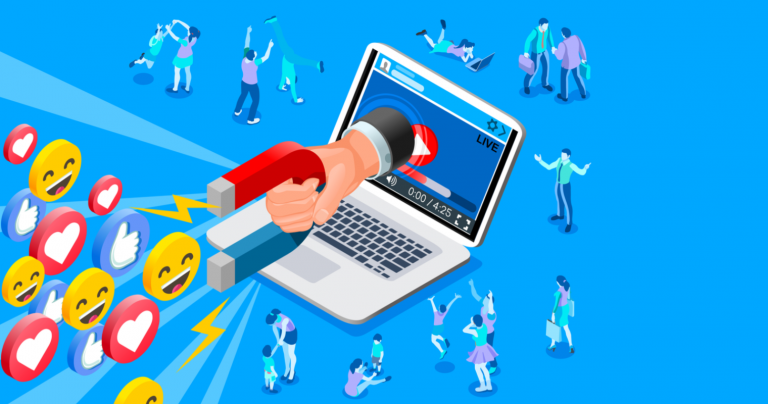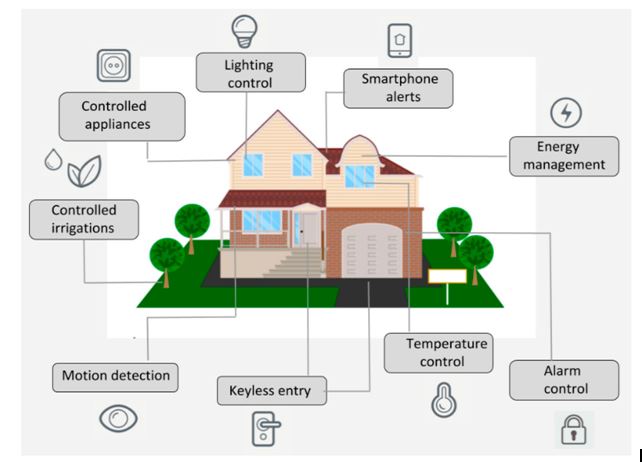
How Social Media is Reshaping Bangladeshi Society: Impact of Social Media and Online Communication

Dial@R&D
01 July 2025 . 6 Minute Read
Introduction
In every corner of Bangladesh — from bustling cities like Dhaka to remote villages in Sunamganj — social media has become a major part of daily life. Students use Facebook Messenger to discuss assignments, families video call relatives abroad using IMO or WhatsApp, and young people follow news and trends on YouTube or TikTok.
The way people communicate, learn, socialize, conduct business, and even express themselves has been transformed. Platforms like Facebook, WhatsApp, YouTube, TikTok, and Instagram are now more than just places for entertainment — they are powerful tools that influence how Bangladeshi society operates, especially among youth.
However, with these benefits come new challenges, such as cyberbullying, fake news, and screen addiction. Understanding the impact of social media and online communication helps students become smart, responsible users — and active contributors to a digital society.
Theoretical Framework
Understanding Social Media
Social media refers to websites and mobile apps that allow users to create content, communicate with others, and share ideas or information with a wide audience. These platforms are interactive — meaning users are not just watching or reading but also commenting, reacting, and posting their own content.
Some of the most used social media platforms in Bangladesh are:
Facebook: People use it to share life updates, join interest groups, promote small businesses, and connect with friends and family.
YouTube: A platform where users watch videos ranging from entertainment to educational tutorials and can create their own video channels.
WhatsApp and Messenger: Mainly used for direct messaging, voice notes, group chats, and file sharing.
TikTok and Instagram: Popular among youth for short video content, trends, and lifestyle sharing.
Each platform has different features, but their common purpose is to help people connect, share, and stay updated in a digital environment.
What is Online Communication?
Online communication means sending and receiving messages through the internet using computers or mobile devices. Unlike traditional methods such as letters or face-to-face meetings, this form of communication happens in real-time and across long distances.
Types of online communication include:
Text-based chat (Messenger, WhatsApp, email)
Voice or video calls (Zoom, Google Meet, IMO)
Forums and blogs (like Reddit, Medium)
Social media comments and reactions
In Bangladesh, this has become an essential part of life for students, teachers, business owners, health professionals, and families. For example, a teacher can conduct a class through Google Meet, while a student submits homework via email.
These tools make it possible to work, study, or stay socially connected — even if people are far apart.
How Social Media and Online Communication Work in Bangladesh
In Bangladesh, the use of social media and online communication has rapidly expanded in both urban and rural areas, largely due to widespread mobile phone access, low-cost internet packages, and increasing digital literacy. Even in remote districts, it’s common to see people using apps like Facebook, Messenger, YouTube, or WhatsApp on affordable smartphones.
Everyday Use Among Students
Students across schools and universities use platforms like Messenger to create study groups where they can discuss homework, share notes, and remind each other of exam schedules. Online classrooms, especially after the COVID-19 pandemic, became a regular practice with Zoom and Google Meet being widely used for lectures and assignments.
For example, in a government college in Mymensingh, students formed Messenger groups for different subjects, where they share videos, documents, and live exam tips from teachers.
Businesses and Entrepreneurs
Small business owners in Bangladesh use Facebook pages or WhatsApp to promote their products. Many of them — especially women — have become self-employed by running online stores from their homes. They take orders via Messenger and use mobile banking services to receive payments.
In Dhaka’s Mirpur area, a boutique owner showcases her dresses on Instagram and sells through Facebook Live, interacting directly with potential customers in real-time.
Families and Migrant Workers
Many families in Bangladesh have members working abroad. With apps like IMO, WhatsApp, and Facebook, families stay emotionally connected through video calls and messages, reducing the feeling of separation. These platforms help parents talk to their children abroad or receive updates about their lives instantly — something that was impossible just 15 years ago.
Government and Institutions
Various government organizations and NGOs now use Facebook pages to share public announcements, health alerts, or educational campaigns. For instance, during the COVID-19 pandemic, the Ministry of Health regularly posted updates, vaccination schedules, and safety advice on social media — helping millions stay informed without watching TV or reading newspapers.
Positive Impacts of Social Media in Bangladeshi Society
Social media is no longer just for chatting or sharing photos. In Bangladesh, it plays a vital role in education, career development, business, communication, and even disaster response. When used wisely, social media can improve lives and help society grow.
Below are some of the most important positive effects of social media in the Bangladeshi context:
1. Faster and Easier Communication
Social media has made communication instant and accessible. Whether it’s a school group in Dinajpur or a family in Dhaka with relatives in Dubai, people can stay connected in real time using apps like Messenger, WhatsApp, IMO, or Facebook.
Example: A student preparing for the SSC exam can message classmates to clarify a question at any time. This saves time and fosters collaboration outside the classroom. It also helps people maintain emotional bonds across long distances, which was much harder in the past when letters or long-distance phone calls were the only options.
2. Access to Educational Resources
Platforms like YouTube, Facebook, and WhatsApp are now full of free learning materials, making education more inclusive and flexible.
Students can learn math, coding, science, or English grammar by following popular Bangla content creators.
Coaching centers live-stream classes on Facebook, allowing students from rural areas to attend without traveling.
Example: Rafi, a Class 9 student in Bogura, follows a YouTube channel that explains physics in Bangla using animations. This helps him prepare for his SSC exam with better understanding. Teachers also form groups to share notes, lecture links, and exam suggestions — especially helpful during school closures or exam season.
3. Support for Small Businesses and Entrepreneurs
Social media has made it easy for small business owners, especially women and youth, to promote and sell their products without a physical shop.
Entrepreneurs create Facebook pages to sell items like clothing, handicrafts, homemade food, or cosmetics.
Customers place orders via Messenger or WhatsApp and pay through mobile banking (like bKash or Nagad).
Example: Shila, a university student in Khulna, runs a Facebook page to sell printed T-shirts. She designs them herself and takes orders online, earning money to support her education. This shift has made business opportunities more inclusive, especially for people with limited capital.
4. Raising Social Awareness and Civic Engagement
Social media allows people to share information about health, environment, safety, and social issues quickly. Awareness campaigns about topics like road safety, climate change, or women’s rights reach thousands within hours.
During natural disasters, volunteers use Facebook to organize relief work and donations.
Youth-led organizations use Instagram or TikTok to raise awareness about plastic pollution or tree planting.
Example: During the 2022 Sylhet flood, students created a Facebook group to collect funds, organize donations, and share real-time updates from affected areas. This has made Bangladeshi youth more involved in civic engagement and social responsibility.
5. Career Building and Skill Development
Social media helps young people build careers by offering:
Job posts and internship advertisements through Facebook groups and LinkedIn.
Skill-building tutorials on YouTube (e.g., graphic design, freelancing, digital marketing).
Personal branding through portfolio posts or video resumes.
Example: Tanvir, a graduate from Barisal, found his first freelance job as a video editor by sharing his work in a Facebook group called “Freelancers in Bangladesh.” Employers also check social media profiles to understand candidates’ interests and professionalism. Students with active, positive profiles often get noticed.
6. Encouragement for Creativity and Expression
Social media gives everyone — especially students and young creators — a chance to express themselves through:
Poetry, art, and writing.
Vlogs, music, and video content.
Opinions and public speaking.
These platforms support creative freedom and help build confidence in communication.
Example: A Class 11 student from Rangpur posts spoken word poetry on TikTok and YouTube. His videos go viral, encouraging him to pursue a career in creative media. This is important in a society where creative fields are often overlooked in traditional education.
7. Global Exposure and Digital Inclusion
Students in Bangladesh are now exposed to international trends, technologies, and cultures — helping them compete in a global environment.
Following international news on Twitter or Instagram.
Watching global university lectures or competitions.
Learning how students abroad study or work.
This exposure prepares Bangladeshi youth to become globally aware citizens while staying rooted in local values.
Conclusion
Social media and online communication have become powerful tools in modern Bangladesh. They make it easier to learn, connect, work, and grow. From school students to small business owners, people are using these platforms to make their lives better and more productive.
But this power comes with responsibility. Students must learn to:
Use social media safely.
Check facts before sharing.
Balance screen time with real-life study and family.
Protect their personal information.
For future careers, education, and social awareness, mastering the wise and responsible use of social media is no longer optional — it is a key life skill.
Practice Tasks (For University Level Students)
Survey Task:
Interview 20 students in your university. Ask how much time they spend on social media, which platforms they use most, and how it affects their study habits. Present your findings with a 500-word analysis and a chart.
Short Essay (600 words):
"How can students in Bangladesh use social media as a tool for education and career growth without falling into digital distractions?"
Fact-Checking Assignment:
Collect five viral social media posts. Research and write whether they were true or false, and explain how you verified the facts.
Awareness Campaign Plan:
Design a small social media awareness project for your campus. Include posters, hashtags, and messages about digital safety, screen-time balance, and cyberbullying prevention.
Recent blogs




